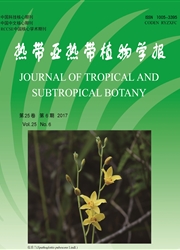

 中文摘要:
中文摘要:
为探讨小果野蕉(Musa acuminata)中NBS 基因的功能,基于新近发表的小果野蕉全基因组序列,对NBS 基因家族进行鉴定、分类和染色体定位,解析基因的复制特征、系统发育关系及上游启动子调控元件类别,推测这些基因在小果野蕉中可能的功能.结果表明,在小果野蕉全基因组中鉴定出125 个NBS 基因,包括78 个标准和47 个非标准NBS 基因.多数NBS 基因在染色体上以基因簇形式存在,串联复制是NBS 基因家族扩张的主要动力.系统发育分析表明标准NBS 基因形成两大分支,77 个标准NBS 基因有EST 表达支持.这为群体水平的抗病基因型筛选提供了本底信息,促进栽培香蕉分子抗病育种进程.
 英文摘要:
英文摘要:
In order to understand the function of nucleotide-binding site disease resistance genes (NBS) in Musa acuminata, based on recent publication of draft genome sequence of M. acuminata, the genome-wide NBS-encoding genes were identified, classified and chromosome located. The characteristics of gene duplications, phylogeny construction, distribution of adjacent promoter elements, expression evidences, and homologous function inferences were analyzed. The results showed that 125 NBS genes were identiifed from whole genome of M. acuminata, including 78 regular and 47 non-regular NBS genes. They were clustered into two clades phylogenetically, and most of the regular NBS-encoding genes resided in gene clusters and tandem duplications were predominant. Expression clues were found among 77 regular genes according to the public EST database. These would provide some fundamental information about the NBS-encoding genes in Musa species, and promote molecular disease-resistant breeding of cultivate banana.
 同期刊论文项目
同期刊论文项目
 同项目期刊论文
同项目期刊论文
 期刊信息
期刊信息
